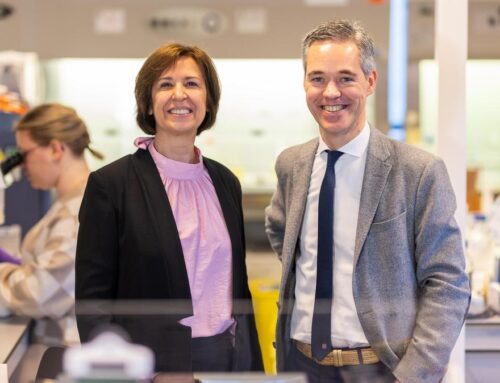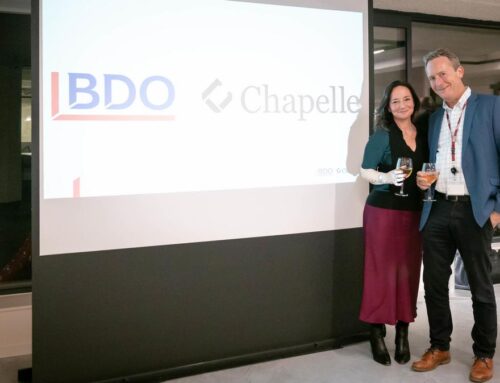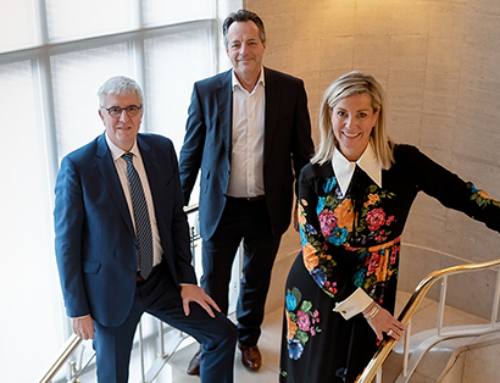Municipal mergers – do they make sense?
BDO’s benchmark study confirms merger opportunities

Flanders has 300 municipalities. More and more of them are toying with the idea of merging – to strengthen their financial base, and because scale is important. The larger a municipality, the more power it has to serve its citizens. But a merger is not something you rush into. Our experts have developed a step-by-step plan to assist local authorities during the merger process.
Bert Gijsels, Partner BDO Accountancy, Public Sector
In 2019, municipalities and Public Centres for Social Welfare (PCSWs) carried out separate accounting, except for a few merger authorities (15 municipalities entered into a merger, which led to 7 new merger municipalities). This brings the total in Flanders to 300 municipalities. Our experts analysed the 2018 and 2019 annual accounts of all these Flemish cities and municipalities. It showed that they were collectively building up a savings pot of 2,548 billion EUR (for the key figures, read box ‘Flemish municipalities according to scale’) and that they were generally financially sound at the start of the COVID-19 crisis.
“A well-thought-out merger process forms a lever to make the merger authority financially sound, smart and digital.”
Flemish municipalities according to scale
| Scale | number of municipalities | number of inhabitants |
|---|---|---|
| <10,000 inhabitants | 69 | 482,000 |
| >10,000 and < 20,000 inhabitants | 130 | 1,860,000 |
| >20,000 and < 30,000 inhabitants | 51 | 1,218,000 |
| >30,000 and < 50,000 inhabitants | 38 | 1,145,000 |
| >50,000 and < 100,000 inhabitants | 8 | 606,000 |
| >100,000 inhabitants | 4 | 1,008,000 |
| Total | 300 | 6,319,000 |
Municipalities in Flanders tend to be small – almost two-thirds of them have fewer than 20,000 inhabitants. By way of comparison, the average number of inhabitants in a municipality in the Netherlands is over 40,000; and today, that country has 351 municipalities, compared to 633 in 1995.
COVID-19 puts pressure on income
There is no doubt that the COVID-19 pandemic is having an impact on the operation of local authorities. Just think of the extra pressure on residential care centres or the loss of income from taxes. Some cities and municipalities will have to provide additional support to their PCSW due to an increasing number of support applications. And we have not yet discussed the organisational workload – for example, to align the operation of the local authority with the guidelines on home and teleworking, for the organisation of the vaccination centres, etc. The future will reveal the actual impact of all this on the finances of local authorities.
Key figures
Some key figures from the annual accounts of the municipality in 2019, expressed in euro/resident. The figures relate only to the municipalities, not to the PCSWs.
- Investments in tangible/intangible fixed assets 271 vs. 285 in 2018 (down 5%)
- Loan debt per inhabitant: 984 vs. 976 in 2018 (up 1%)
- Self-financing margin 182 vs. 119 in 2018 (up 53%)
- Available resources 390 vs. 397 in 2018 (down 2%)
Overview of the 4 categories summarised per province:
| Tangible and intangible fixed assets | |
|---|---|
| Province | EUR/inhabitant |
| Antwerp | 249 |
| Limburg | 251 |
| East Flanders | 274 |
| Flemish Brabant | 257 |
| West Flanders | 330 |
| Flanders | 271 |
| Loan debt | |
|---|---|
| Province | EUR/inhabitant |
| Antwerp | 795 |
| Limburg | 961 |
| East Flanders | 1,111 |
| Flemish Brabant | 996 |
| West Flanders | 1,121 |
| Flanders | 984 |
| Self-financing margin | |
|---|---|
| Province | EUR/inhabitant |
| Antwerp | 194 |
| Limburg | 146 |
| East Flanders | 193 |
| Flemish Brabant | 176 |
| West Flanders | 181 |
| Flanders | 182 |
| Cumulated budgetary result | |
|---|---|
| Province | EUR/inhabitant |
| Antwerp | 213 |
| Limburg | 437 |
| East Flanders | 340 |
| Flemish Brabant | 508 |
| West Flanders | 588 |
| Flanders | 271 |
Explanation
Investments in tangible and intangible fixed assets
2019 was the year of the changeover of power in local authorities (and thus the closing year of the previous multi-annual plan: 2014-2019) and the starting year of the current management team – which, it is true, continued to work with the budgets drawn up by the previous policy team.
In that election year, the average realisation rate of planned investments was 51%. In concrete terms, this means that, with a planned investment budget of 100 EUR, the authority actually realised or implemented 51 EUR. No fewer than 125 of the 300 authorities realised less than 50% of their budget in the 2019 financial year. Of these authorities, 24 have a maximum realisation level of 20%.
The realisation level of 51% is higher than in 2018. However, it remains an under-utilisation of financial capacity. After all, by setting budgets and not using them, fewer or no resources are available for other projects. Thanks to a more refined financial forecast, well-thought-out project management and efficient planning of investment works, under-utilisation can be avoided. A workable target is a realisation level of 75%.
Outstanding loan debt
Although per capita investments have decreased, loan charges have increased. This is partly explained by the decrease in own working capital (available resources). A leverage ratio of up to 1,000 EUR/inhabitant is often used as a criterion. 108 administrations have a debt of more than 1,000 EUR/inhabitant, 192 administrations have a debt of less than 1,000 EUR.
The parameters of outstanding loan debt are also monitored by the Flemish government. This parameter states that 8% of the total outstanding debt should be repaid annually. The aim is to prevent councils from transferring debt to the next legislature. A merger can offer solace for the authorities that do not achieve 8% – whether or not during consecutive years. The Flemish government also shares this vision. Because the loan debt weighs relatively heavily on local authorities, the Flemish government created the merger bonus: if authorities set up a merger, the Flemish government takes over a debt of 500 EUR/inhabitant.
Self-financing margin (SFM)
The result of the SFM increased by 53%, from 119 EUR/inhabitant to 182 EUR/inhabitant. Only 7 authorities closed the annual accounts with a negative margin. There were 15 such instances in 2018. A positive margin means more room for the authority to invest (whether or not with its own resources), but, as mentioned earlier, in general Flanders does not succeed in this. In the budgeting process, an annual positive SFM is essential to keeping the finances of the local authority under control and being able to cope with setbacks (such as COVID-19).
Available resources
The available resources decreased slightly by 1.8%. Here we see major differences between the provinces. For example, Antwerp has 36% fewer resources (213 EUR) per citizen compared with West Flanders (588 EUR). On the other hand, the loan debt in the province of Antwerp is 71% of that of the province of West Flanders.
As explained above, the 4 key figures are inextricably linked. Every authority in Flanders is aware of the need for sound financial management and its direct impact on the figures. The merger of 2 or more authorities will have a positive impact on their effectiveness.
Why a merger?
Today, the idea of the merger – or spirit of cooperation – is appealing to a number of local authorities, and it is also being actively promoted by the Flemish Minister of Local Government, Bart Somers. The financial aspect is not the only factor in considering whether or not to merge. The scale of the authorities also plays a role. After all, the same effort is often expected of each local authority, although not all of them have the same resources. This is partly because municipalities receive government funding based on their number of inhabitants. In other words, a large municipality receives more resources and, therefore, more opportunities to invest and serve its citizens. Proportionally, Flanders mainly has small-scale authorities (see Table in box 1).
For many local authorities, the Flemish merger bonus is a strong incentive to merge.
The merger bonus is a very real incentive for many local authorities to take the step towards a merger. Even though small municipalities face challenges different from those of large cities, no authority escapes demographic evolutions and challenges in terms of climate, digitisation, spatial planning, sustainability, health, etc. Every municipality wants to create the right framework conditions for its residents for economic activities, make the right choices in environmental, mobility and housing policy, and stimulate a thriving leisure and social life. And more than ever, the COVID-19 pandemic is emphasising the importance of a policy that creates the necessary stimuli for a healthy and prosperous life for all residents.
BDO’s step-by-step plan
BDO has developed a step-by-step plan to support local authorities in their merger process. Our experts assist the thought and implementation process with a systematic approach. “This is not an unnecessary luxury,” says Bert Gijsels, Partner BDO Accountancy. “We are convinced that a well-thought-out merger process not only leads to a successful merger of the structures, but also forms a lever to make the merger authority financially sound, smart and digital. And such a process offers the necessary tools to work on an ambitious policy that focuses on sustainability and quality of life.”



















